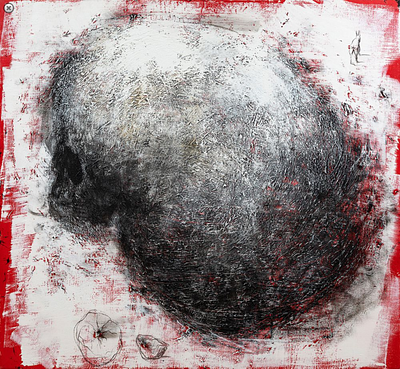DARIO DE REGOYOS Y VALDÉS (Ribadesella, Asturias, 1857 - Barcelona, 1913). "View of Pont Royale, 1881. Oil on panel. Enclosed certificate issued by
Lot 87
About Seller
Setdart Auction House
Carrer Aragó 346
Barcelona
Spain
Setdart Subastas was born in 2004 and is currently the first online art auction in Spain with solidity, prestige and reliability guaranteed by our more than 60,000 users. Setdart has a young, dynamic and enterprising team ready to successfully manage the purchase and sale of art works through custom...Read more
Categories
Estimate:
EUR€40,000 - EUR€50,000
$41,666.67 - $52,083.33
Absentee vs Live bid
Two ways to bid:
- Leave a max absentee bid and the platform will bid on your behalf up to your maximum bid during the live auction.
- Bid live during the auction and your bids will be submitted real-time to the auctioneer.
Bid Increments
| Price | Bid Increment |
|---|---|
| EUR€0 | EUR€10 |
| EUR€200 | EUR€25 |
| EUR€500 | EUR€50 |
| EUR€1,000 | EUR€100 |
| EUR€3,000 | EUR€200 |
| EUR€5,000 | EUR€500 |
| EUR€10,000 | EUR€1,000 |
| EUR€20,000 | EUR€2,000 |
| EUR€50,000 | EUR€5,000 |
About Auction
By Setdart Auction House
Oct 19, 2021
Set Reminder
2021-10-19 08:00:00
2021-10-19 08:00:00
America/New_York
Bidsquare
Bidsquare : CONTEMPORARY ART
https://www.bidsquare.com/auctions/setdart-auction-house/contemporary-art-7701
Setdart Auction House sofia@setdart.com
Setdart Auction House sofia@setdart.com
- Lot Description
DARIO DE REGOYOS Y VALDÉS (Ribadesella, Asturias, 1857 - Barcelona, 1913). "View of Pont Royale, 1881. Oil on panel. Enclosed certificate issued by Don Juan San Nicolás. Signed, dated and dedicated in the lower left corner. Measurements: 60 x 73 cm; 86 x 98 cm (frame). In this work the artist depicts a view of the Pont Royale, the Seine, and in the background the dome of the Petit Palais in Paris. The work was executed in 1881, during which time the artist was living in Brussels, where he had moved to in 1879. However, every year Regoyos travelled to the Basque Country, stopping over in Paris, where he spent several days. An example of this is his friendship with the painter Paul Émile Sautai (1842-1901), to whom he dedicated this work. Darío de Regoyos He trained in Madrid at the San Fernando Academy (1878). Soon, induced by his teacher Carlos de Haes and his musician friends, Enrique F. Arbós and Isaac Albéniz, he settled in Brussels (1879), where he became a pupil of Josep Quinaux. In the Belgian capital he came into contact with E. Verhaeren, G. Rodenbach and M. Maeterlinck, a group of young creators who were forging the main Belgian cultural movement of the end of the century, a movement in which he himself would play an eminent role. He was a member of the groups L'Essor (1881-83) and Les XX (1883-93). However, he never settled anywhere; even during his Belgian period he frequently returned to Spain. During the 1980s he lived in the Basque Country, where he revitalised the already important local modern art school. In 1888 he accompanied the writer Verhaeren on a trip to Spain (he had already done so before with other Belgian companions), which was to be the germ of his famous "España negra" series, published in Barcelona in 1899. While during the 1880s he only took part in exhibitions in Belgium and Holland, in the 1890s he also exhibited in Paris, taking part regularly in the Salon des Indépendants. From these years onwards he also exhibited his work in Madrid, Munich and Barcelona, the latter being the city where his painting was honoured in 1894 by the leading figures of Art Nouveau. However, his work, marked by an Impressionism of which he himself was one of the main proponents, was not well accepted in the more conventional circles. In Belgium, Regoyos was also linked to the society La Libre Esthétique from its beginnings (1894), an association that gathered in this country the heritage of artistic modernism. In 1897 he held his first solo exhibition at the prominent Durand-Ruel gallery in Paris. The second, the following year, was held at Els Quatre Gats in Barcelona, where he was artistic director of the magazine "Luz". From 1900 onwards the range of his exhibitions expanded, and his work was shown in Bilbao, Frankfurt, Berlin, The Hague, Venice, Bayonne, San Sebastián, London, Mexico City, Bordeaux and Buenos Aires, among other cities. At the beginning of the 20th century Regoyos intensified his travels, living between Granada and Bilbao. In 1911 he settled in Barcelona, where he died two years later. He is represented in the Prado Museum, the Thyssen-Bornemisza, the Museo Nacional de Arte de Cataluña in Barcelona, the Museo de Bellas Artes in Bilbao and the Gerstenmaier Collection, among many other museums and institutions.
- Shipping Info
-
In-house shipping available. Please inquire at admin@setdart.com.
-
- Buyer's Premium



 EUR
EUR CAD
CAD AUD
AUD GBP
GBP MXN
MXN HKD
HKD CNY
CNY MYR
MYR SEK
SEK SGD
SGD CHF
CHF THB
THB

















